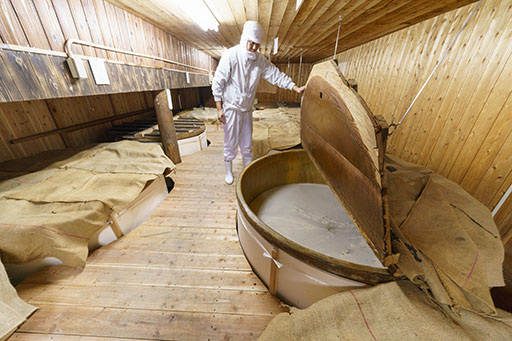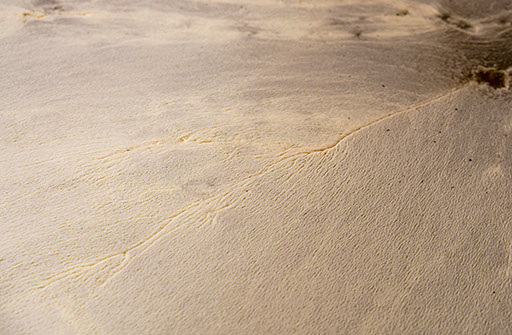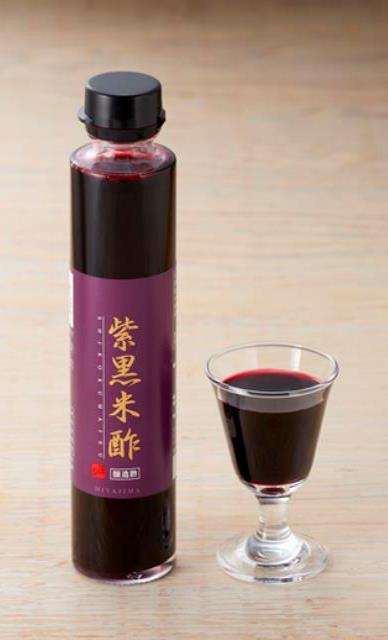Vinegar
Vinegar is a liquid seasoning obtained by acetic acid fermentation of alcohol. The alcohol is obtained by fermentation of various sugar sources, such as rice. Although the main ingredient of vinegar is acetic acid, it also contains amino acids, organic acids, sugars and aroma components, which bring out a unique and distinct flavor. In Japan, rice is often used for vinegar production while fruits, beer and wine are used in European countries and the United States.
Recently, many physiological functions of vinegar have been identified especially in black vinegar containing abundant nutrients, which is drawing the attention of people as one of health foods.
Production of Traditional Pure Rice Vinegar
The most typical vinegar in Japan is rice vinegar. Among them, vinegar brewed using exclusively rice is called pure rice vinegar. In a traditional method, vinegar production starts with brewing sake, which is used for subsequent vinegar fermentation. In this process, steamed rice, rice malt (koji) and water are mixed to perform sugar production. Here, several enzymes from the rice malt convert rice starch into sugar, which is used by alcohol fermentation by inoculated yeast. This mixture is called sake-moromi and the sugar in it is gradually converted into alcohol by the function of the yeast. Acetic acid fermentation of the moromi is then performed by adding acetic acid bacteria, seed vinegar and water. During this process, the alcohol in the moromi is converted into acetic acid by the function of the acetic acid bacteria. After its fermentation, the vinegar is set aside for a certain period to go through a maturation process to enhance its mild flavor.


About Miyajima Shikokumai Vinegar (Purple Rice Vinegar)
